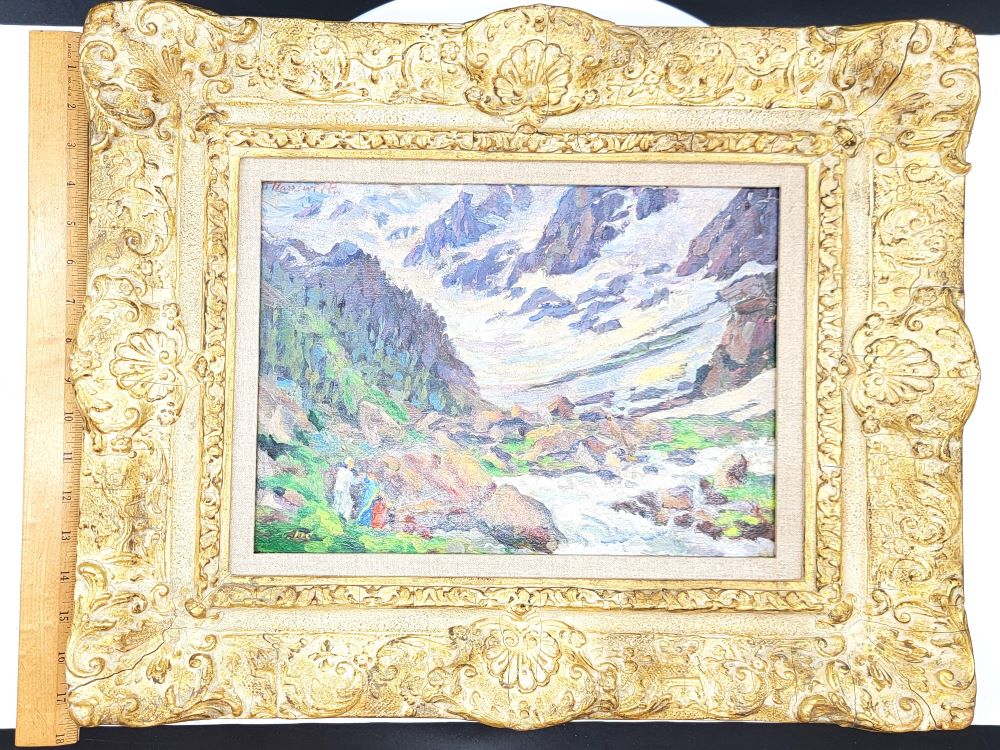Calix Books - About Books!
Building a good book collection means learning more about books, how they are made, printed, types of print, paper used, bindings, restoration and preservation as well as a host of other important historical and reference materials about books and ephemera. You can search for books at: https://www.biblio.com/search.php?author=&title=&keyisbn=&order=pricedesc&dealer_id=1514558 You can also visit our store at: www.calixbooks.com
Friday, March 21, 2025
New Auction Sunday 3-23-2025 Closes 7PM EST
Sunday, December 29, 2024
December 29, 2024 Last Auction for the Year!
An eclectic group of items being offered at Auction Ninja starting to close at 7:00 PM EST.
 |
| Not Issued and Banned Atomic Bomb Stamps! |
 |
| 40th Reunion of Astronauts- Shuttle Moon Pilot and on the moon Astronauts |
 |
| Impressionist Painting Two Kids in the Woods And Much More! Follow the link to signup and bid! |
Tuesday, October 1, 2024
Auction Ninja New and Closed Auctions for 2024!
Auction Ninja Calix Books Site
But it's not just Books and Ephemera! We are broadening our platform to include collectibles, antiques, as well as a host of other items.
Some Highlights
We started auctioning items on Auction Ninja and we are now at our 17th Auction for 2024. Below are some of the images of items that have sold this year.
Tuesday, March 28, 2023
Re-starting the Book and Antiques Business
It's been some time since I last wrote or tried to write a blog about books and a lot has happened to all of us over the last several years. But the good news is I survived the Great Pandemic of our lifetimes! The first one of these I ever encountered was when stationed at Fort Polk, Louisiana, that we all lovingly called 'Fort Puke', because nearly all of us got the Hong Kong Flu. I woke up after passing out in an ice bath, completely naked with two nurses standing over me. I was told that I was in a coma or semi-coma for nearly two weeks and that the ice baths were to keep my temperature below Army standards....That was a shock. But I have to say, this SARS CoV2 virus was far worse than the Hong Kong Flu for many folks, many didn't make it and entire families were nearly wiped out, if not decimated by this virus.
So, I'm back! But now my interests and the interests of Calix Books has broadened not just with the usual books and ephemera but into antiques and in particular, interesting antique smalls that can be shipped and sold over the internet. Calix Books, besides its usual website which only has books and ephemera is now listed Etsy!
Also, our listings on ebay (I've been a member since 1997!) are not just books but a variety of items either bought at auction or found out in the world. Take a look!
Some new interests are:
Japanese Water Pot used to boil the water for the Japanese Tea Ceremony called Chanoyu (Hot Water for Tea) 茶の湯
The first one of these 'Iron Kettles' also called Tetsubin (鉄瓶), that I bought at an auction, when it arrived, I was blown away! It used in and is a part of the Tea Ceremony which in Japanese (known as sadō/chadō (茶道, 'The Way of Tea') or chanoyu (茶の湯)) is a Japanese cultural activity involving the ceremonial preparation and presentation of matcha (抹茶), powdered green tea, the procedure of which is called temae (点前).
More on this later, because of that one purchase, this opened an entirely new area of interest for me, much to my wife's chagrin (What now?). Well I've always been a collector of Japanese block prints and bought my first one as a student at Ohio State University in 1973, a print by Hokusai. His formal name was Katsushika Hokusai (葛飾 北斎, c. 31 October 1760 – 10 May 1849), known simply as Hokusai, was a Japanese ukiyo-e artist of the Edo period, active as a painter and printmaker. Which is below:
Well more on all of this later! Thanks for stopping by! Keep on collecting!
Wednesday, April 6, 2022
Book and Antique Collecting News
|
|
|
|||
|
|||||
|
|
|
|
|||
|
|
|
||||
|
|
|||||
|
While the dust jacket has some obvious damage, the signature of John Le Carre on this first edition for the Le Carre collector is a great find. A duplicate of higher quality can always be purchased later. Many book collectors have several copies of the same edition, signed.
A great way to collect your favorite author is by using the First Edition, Signed (not personalized, unless it’s a famous person), First Issue and collect multiple copies. The number one absolute rule is preservation of the pristine dust jacket. Any damage, even the slightest nick, brings the price down, sometimes appreciably, and alarmingly to the collector. Another rule is don’t buy the books except from a book dealer. All book dealers rely on reputation. So when a bookdealer sells you a signed first edition, first issue in a pristine dust jacket, you can bank on it. Other sites and sellers of first edition, signed books on any of the number of sites, sometimes are not qualified to represent the item you are buying, correctly. Remember the old adage, “if it’s too good to be true, then it probably isn’t true”. I keep a fake Chinese made first US Silver dollar to remind me, while old, it was a forgery, made shortly after the first US trade with China in which dollars were used! |
|
R March 31, 2021, Forum Auctions in the
UK (tinyurl.com/2p8juxzd) had its usual
fine selection of books from early to modern. Being a life-long John Le
Carre fan, latterly from his very first books till the day he passed. Forum
hosted a fine collection of all the Le Carre books, many first editions for
both UK and USA and many signed by the author. The year is 1968. The West is mired in the Cold War, the British have lost their empire, young people are rioting all over the globe, the Vietnam War is in full swing, and in Germany, a mysterious and charismatic leader is rising swiftly to power. Le Carre (David Cornwell) was in Germany at this time working for the British Secret Service (MI6) and had many personal issues, which affected the writing of this novel. Some of the characters and the sites are based on real people and locations. Simon Wiesenthal, the Nazi catcher, helped Le Carre understand the ex-Nazi’s. Serious about Collecting? Then go to Fine
Books & Collecting and sign up for the magazine! Book
Collecting The book collecting genre has somewhat fallen over the last several years as the much younger generations of people across the world, not just in the USA are turning more and more to the internet, books online, apps and other electronic sources for their reading and viewing habits. However, there is a bright spot on the future for book collectors! All the electronic versions of whatever is being published can now be sold as non-fungible assets or NFT’s. The trick for all of us in this age of digital transformation is how to convert rare books into non-fungible assets!! For a primer on NFT’s there is an excellent article by Forbes that does a much better job at explaining the ins-outs of NFT’s and what they can and cannot do. Go to this link for more information on NFT’s: |
|||
|
|
|||||
Possible Finds? |
|||||
|
R |
1. April 13, 2022 - April 27, 2022, Old World Auctions – Online April Online Auction Sale 187 The Auction will be made up of maps, charts, atlases, engravings, historical documents & books. Time: Wed, Apr 13th 8am - Wed, Apr 27th 10pm. If you are near there, you can go look at the stock: VIEWINGS: Apr 14th - April 27th by appointment. 3850 Gaskins Road, Suite 220 Henrico, VA 2. May
25, 2022, The Private Collection of William S. Reese Part One Part One of The Private
Collection of William S. Reese will feature New World Exploration and
Landmark Americana to 1814. The Christie’s Auction will feature some fabulous
and rare works. William S. Reese, one of the premier rare books and ephemera
dealers. |
||||
|
One of the best places to find rare books and ephemera are the auction houses. The trend has been increasing over the last few years so here is a list with the links: 3. April
26, 2022, Sotheby's
- New York. Books and Manuscripts from the Collection of Jay I. Kislak. Sold to Benefit the Kislak Family Foundation. To be announced go to Sotheby’s and sign up. This will be a very expensive auction of some top-quality items. 4. Swann
Auction Galleries: Old Master Through Modern Prints & Drawings. Sale #2602 EXHIBITION to be announced
soon All the auctions are listed through this link. 104 East 25th Street New York, NY |
|||||
|
Calix
Books
450B Paradise Rd.
#281
Swampscott, MA 01907
Richard
Gabriel
Proprietor
781-883-6639
At Biblio:
https://www.biblio.com/bookstore/calix-books-swampscott
At eBay:
https://www.ebay.com/str/calixbooks
At BlogSpot:
Wednesday, August 16, 2017
The Collection of Civil War Memorabilia- Where to Start?
1911- The Photographic History of the Civil War

Saturday, July 29, 2017
Moravian Church- First Edition- 1749
Rare First Edition Book on The Moravian Religion
Parliamentary Shift and a New Dynasty Emerges in Britain
The Book
The Lowell's
$2,000.00
The Book can be Found at our STORE
Saturday, July 22, 2017
1487 The Tudor Rose in the Book Binding of Anton Koberger's Printing of Nicolas De Lyra's Bible
Setting the Stage
1480's and the Tudors
The Tudor's dynasty started with a Welshman technically; by birthplace, but who was a male descendant of the infamous Owen Tudor who secretly married King Henry V's (Henry V was a Plantagenet) widow and sprung the dynasty, culminating in the last royal heir of Queen Elisabeth I. Henry VII claimed the throne through royal (somewhat sketchy links) as the last male Lancasterian and fought and won on the battlefield (he was the last king to take title to the English throne through battle, forget Cromwell, he was no King). Rather than trying to paraphrase the information, here is a direct excerpt from Wiki.
The Roses
Anton Koberger
The Koberger Bible Volume 3 with Tudor Roses

Previous ownership and period hand titling, notice on the inside seam the exposure of an older velum document...
Only a few lines are visible of the older velum document (used to bind the book).
Koberger signature and declaring the volume to be the work of Nicolas De Lyra
One of the engravings found in the book...
Engraving
A floor plan---






























